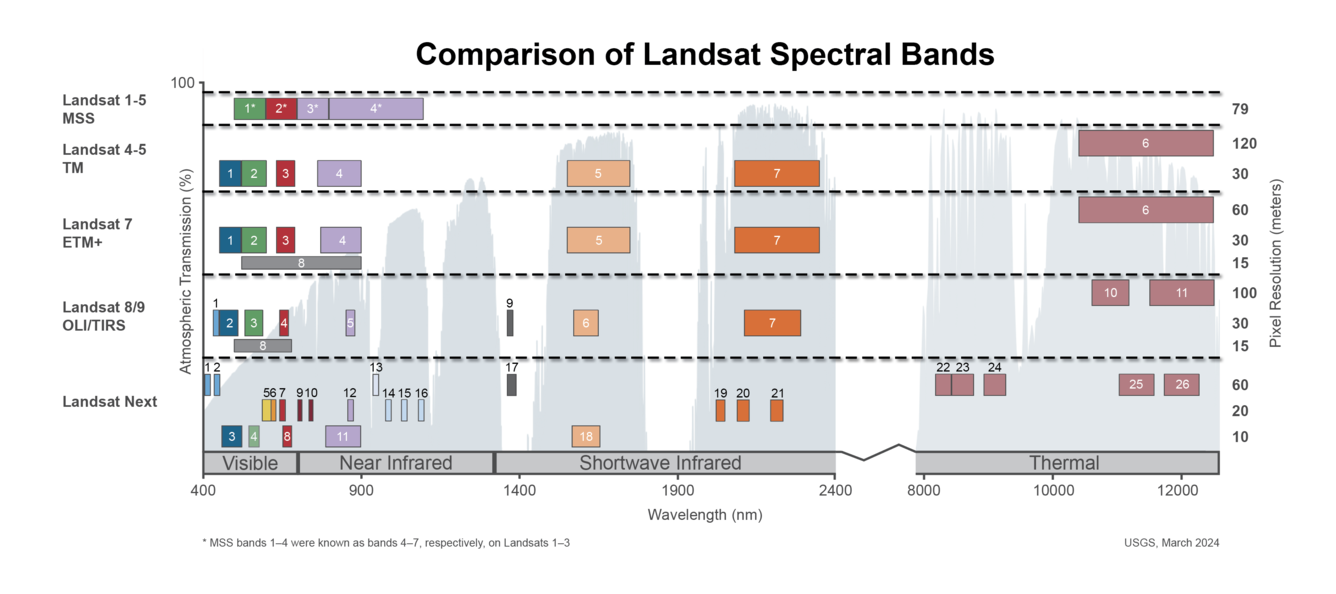Spectral Bandpasses for all Landsat Sensors

Detailed Description
This image shows the spectral bandpasses for the sensors on all Landsat satellites.
- Landsat 1-5 Multispectral Scanner System (MSS): the sensor onboard each satellite acquired data in four spectral bands in the visible and near infrared spectrums
- Landsat 4 and Landsat 5 Thematic Mapper (TM): the sensor onboard each satellite acquired data in seven spectral bands, and included shortwave infrared and thermal data
- Landsat 7 Enhanced Thematic Mapper Plus (ETM+): acquired data in a total of eight spectral bands, including a 15-meter panchromatic band
- Landsat 8 and Landsat 9 Operational Land Imager (OLI) and the Thermal Infrared Sensor (TIRS): the sensors onboard each satellite acquire data in a total of eleven bands, including:
- Band 1 – “Coastal / Aerosol Band”: helps scientists measure ocean color in coastal regions and is also useful for aerosol detection
- Band 9 – “Cirrus Band”: For measuring light in the part of the electromagnetic spectrum where the clouds are most visible for enhanced cloud and shadow detection
- Bands 10 and 11 thermal bands for measuring thermal infrared radiation
- The FY 2026 President’s Budget restructures the Landsat Next mission. The USGS and the National Aeronautics and Space Administration (NASA) will work together to identify more affordable approaches to ensuring the continuity of Landsat data for users.
*Landsat MSS = the numbers shown are for Landsat 4 and Landsat 5; Landsat 1-3 band numbers are 4, 5, 6 and 7.
Sources/Usage
Public Domain.

